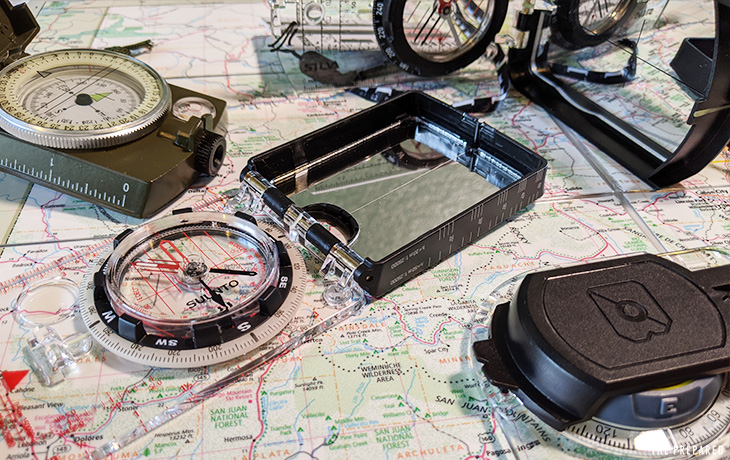Best compass for survival

-
Comments (6)
-
Pavel Minaev - April 10, 2020
Suunto MB-6 deserves a mention, since it combines the mirror with the ability to take fairly precise bearings, much like a lensatic.
-
John AdamaStaff - April 10, 2020
Thanks Pavel! Do you think the extra features for precise bearings come with the tradeoff of too much complexity for people’s basic orienteering needs? ie. Why experts were generally steering people away from lensatics to begin with.
-
Pavel Minaev - April 10, 2020
I’m no expert, but personally, I find MB-6 to be quite a bit easier to use than Cammenga to take a bearing – you just let the mirror drop all the way out, and aim with the sights while watching the reflection of the needle. Maybe it’s less precise, but it feels precise enough for e.g. navigation with topo maps and pace beads.
Either one is still perfectly usable as a regular compass, so it’s not really a tradeoff, other than paying the price for the extra features. For Cammenga with its all-metal construction, you’re also trading weight for ruggedness, I suppose.
-
-
Et03 - April 11, 2020
I can’t recommend the Suunto Clipper enough. I burned through several cheap button compasses mounted on my watch band before getting a Clipper and have used it almost every day since (3 years) for military use. It’s good enough for ‘I am going north north east’ or that ‘sound came from SSW’. I have found it most useful when on the move during the day when I don’t need a precise azimuth, I.e. when there are recognizable terrain features to help you. When used with a garmin foretrex or similar GPS I have found it super useful because you don’t get sucked into following the arrow on the GPS into bad terrain. You can look at your grid location, look at your map, and easily adjust your route.
If you always wear a smart watch consider putting a simple wrist watch with a clipper on the watch band in your bug out/get home/ travel bag. In the event your smart watch battery dies you have a watch and the navigation aid with it. This can be especially useful if you need to move quickly or need to use both hands frequently. They are handy outside of the emergency scenario as well, I have used mine traveling when my smart watch has died. It comes in handy when you’re in a place that was settled before urban planning! You look like a bit of a dork with a compass on your watch but depending on where you are and what you’re doing that might not matter.
-
Conrad B - April 15, 2020
The watch idea is a good one. When do you feel most limited by the Clipper?
-
Et03 - April 16, 2020
I only really feel limited by it while navigating at night, especially in poor illumination (new moon, heavy cloud cover, etc). The north seeking arrow and NESW marking are luminous but need to be charged by light. I wear the clipper on a small wrist watch so it is underneath my shirt sleeve unless I am looking at it. As a result it doesn’t charge much light during the day. For night navigation I have my Cammenga lensatic compass in one of the shoulder pockets on my camouflage blouse so I use that. Or I set my foretrex up to display both heading and bearing then navigate by keeping two as close together as possible. I have thought about getting a tritium wrist compass but I haven’t need to do enough no-illum hardcore navigation to justify getting one.
If you’re in a situation where light discipline at night isn’t a big deal (aka 99% of people) You can use a light to illuminate the compass if it doesn’t have enough charge.
-
-